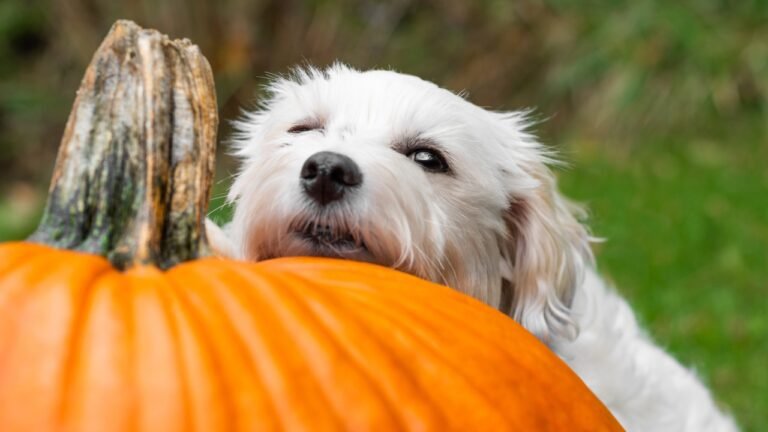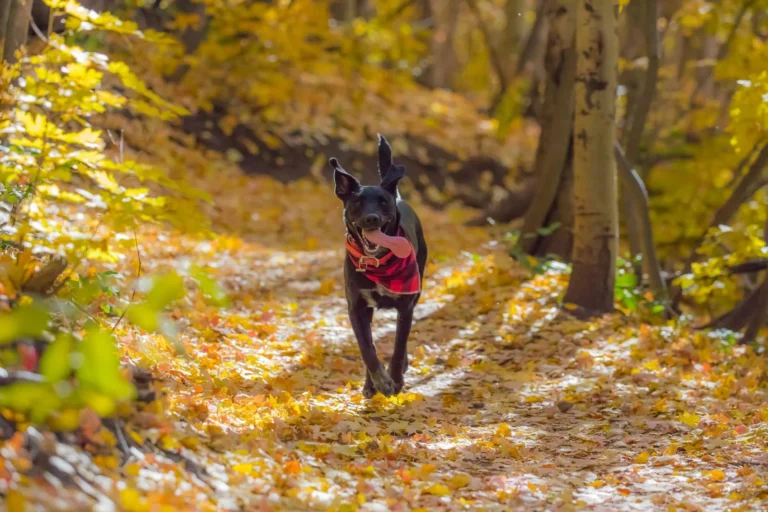Autumn brings a beautiful array of changes, but it also introduces new considerations for your dog’s health and well-being. As temperatures drop and daylight shortens, it’s important to adjust your routine to keep your furry friend comfortable and safe. Be mindful of seasonal hazards like falling leaves, colder weather, and holiday festivities that may pose risks. By tailoring your care practices, you can ensure your pet stays healthy and happy throughout the autumn months.
Key Takeaways:
- Adjusting Exercise: As temperatures drop, it’s important to modify your dog’s exercise routine to fit the season, ensuring they stay active while staying warm.
- Grooming Needs: Autumn can result in increased shedding, making regular grooming imperative to maintain a healthy coat and reduce allergens in your home.
- Health Precautions: Be aware of seasonal hazards such as mushrooms and insect bites, and consider a vet check-up to prepare for any seasonal changes in your dog’s health needs.
Understanding Autumn Changes
The arrival of autumn brings about significant changes in the environment, which can impact your dog’s well-being. As the weather cools and days shorten, your dog may require adjustments to their routine, from exercise habits to grooming practices. It’s imperative to pay attention to these seasonal shifts to ensure that your furry friend remains comfortable and healthy during this transitional period.
Seasonal Health Concerns
One of the key health concerns during autumn is the risk of allergies. Many dogs are sensitive to falling leaves, mold, and pollen, which may lead to itching, ear infections, or other skin irritations. Stay vigilant for signs of distress and consult your vet if you notice any unusual behaviors or symptoms.
Adapting to Weather Conditions
By adjusting your dog’s routine to align with changing weather conditions, you can promote their health and safety. Autumn can introduce brisk temperatures and occasional rain, which may require you to scale back outdoor activities or provide additional clothing, like a dog sweater, to keep your pup warm.
But as the temperatures fluctuate, be aware of the risks of hypothermia and cold-related illnesses for your dog. A lightweight sweater can provide insulation during chilly walks, especially for smaller or short-haired breeds. Additionally, consider the pavement temperature, which can drop significantly, potentially causing painful paw pad injuries. Always assess your dog’s comfort level and adjust their daily activities, making sure they remain healthy and active while staying safe from autumn’s cooler temps.
Nutrition Adjustments
Some dogs may require adjustments to their diet as the weather changes. As temperatures cool down in autumn, your dog’s activity levels might shift, leading to changes in their calorie needs. It’s important to assess their weight and energy levels regularly, ensuring they are receiving the right nutrients to support their health and well-being during this transitional season.
Dietary Needs in Autumn
Beside adjusting the quantity of food, focus on incorporating seasonal ingredients into your dog’s diet. Foods like pumpkin and sweet potato are not only nutritious but can also aid digestion. Ensure your pet’s meals are balanced with proteins, vitamins, and minerals to meet their specific needs throughout the autumn months.
Hydration Importance
Importance of hydration can often be overlooked during autumn. As the weather cools, you may notice a decrease in your dog’s water intake, but their need for hydration remains. It is important to provide fresh water daily and encourage your dog to drink regularly, as proper hydration supports metabolic function, digestion, and overall health.
Needs for hydration intensify during autumn due to variations in temperature and activity. Even though your dog may seem less thirsty, they still require adequate water intake to avoid dehydration. Dehydration can lead to severe health issues, including kidney stones and urinary tract infections. To enhance their water consumption, consider adding wet food to their meals or offering ice cubes as treats to promote hydration in a fun way.
Grooming for the Season
After the long, hot summer, your dog’s grooming routine needs adjustments as the cooler autumn air sets in. This season, focus on maintaining a healthy coat and skin by incorporating regular brushing, bathing, and inspections. Seasonal elements like fallen leaves and damp conditions can impact your dog’s fur and skin health, so ensure your grooming regimen supports their comfort during this change.
Coat Care and Shedding
Season changes can lead to increased shedding for many dogs as they transition from their lighter summer coats to thicker winter fur. You should expect more fur around your home and adjust your grooming schedule accordingly. Regular brushing not only helps reduce the amount of hair in your space but also promotes a healthy, shiny coat.
Skin Health Considerations
By paying close attention to your dog’s skin, you can ensure they remain comfortable and healthy throughout autumn. Changes in humidity and temperature can affect their skin, potentially leading to dryness or irritation. Regular checks for redness, dry patches, or itchiness can help you catch any issues early.
Health issues can arise from neglected skin care during fall. You should provide your dog with adequate moisture by using suitable shampoos and conditioners that nourish their skin. Be mindful of your dog during walks, as allergens and dirt from fallen leaves pose risks to their skin. A clean dog is a healthy dog, so ensure to keep their coat clean while also applying a good moisturizer if you notice any dry spots.
Exercise and Activity Level
Not only does autumn bring colorful leaves, but it also means adjusting your dog’s exercise routine to match the cooler weather. As temperatures drop, you may need to Autumn Pet Safety Tips Preparing Your Pet for Cooler … Adjusting your dog’s activity level will ensure they remain healthy and engaged during this season.
Outdoor Safety Tips
Along with changing your exercise routine, consider these outdoor safety tips to protect your furry friend:
- Keep your dog leashed during walks to avoid accidents.
- Be cautious of frostbite and maintain safe walking routes.
- Monitor your dog for signs of exhaustion or cold stress.
Perceiving the differences in seasonal weather helps promote your dog’s wellbeing.
Adjusting Exercise Routines
Any changes in temperature can affect your dog’s need for exercise. You might find that your dog enjoys longer walks during the cooler days, but be cautious about wet or slippery surfaces that could lead to injuries.
Safety is imperative as you consider making adjustments and structuring your dog’s playtime activities. Ensure you are aware of shorter daylight hours, and be proactive in scheduling outdoor activities in the daylight. If your dog is more active indoors, consider engaging them with fetch or interactive toys to keep their energy levels balanced. Ensuring your dog stays warm and comfortable, while getting adequate exercise, will promote their overall happiness in the autumn months.
Health Monitoring
Once again, as the leaves change color and temperatures drop, it’s necessary to adapt your health monitoring routine for your dog. Your pet’s health can be impacted by the seasonal shifts, making vigilance in observing any changes in behavior, appetite, or activity levels important. Staying attuned to these nuances will ensure your furry friend remains healthy and happy throughout the autumn months.
Routine Vet Check-ups
Among the best ways to ensure your dog’s health is through regular veterinary check-ups. These visits allow your vet to assess your pet’s overall health, update necessary vaccinations, and discuss any seasonal concerns, such as weight management and allergies that might arise during this time of year.
Recognizing Seasonal Illnesses
About the change of seasons, it’s important to be aware of potential illnesses that can affect your dog in autumn. Keeping a keen eye on any unusual symptoms can help you address issues early on, like allergies and respiratory problems that tend to spike during this time.
Routine monitoring of your dog’s health during the fall is vital. You should stay alert for signs of seasonal allergies, such as itching, sneezing, or skin irritations, which are more prevalent due to pollen from fallen leaves. Additionally, be wary of respiratory infections that may occur as the weather changes. If you notice your dog exhibiting unusual behaviors, such as lack of energy or changes in food appetite, it’s advisable to consult your veterinarian quickly to prevent any complications.
Preparing for Holidays
Many pet owners eagerly look forward to the holiday season, but it’s vital to consider your dog’s needs during this busy time. Preparing for the holidays involves ensuring that your furry friend is comfortable and stress-free while also keeping their safety a top priority. By adjusting your routine and planning ahead, you can create a festive environment that includes your dog without compromising their well-being.
Managing Stress and Anxiety
About this time of year, dogs can experience increased levels of stress and anxiety due to changes in routine, noisy celebrations, and unfamiliar visitors. Keeping your dog’s environment consistent and providing a quiet space can help them feel safe. Incorporating calming activities, like walks or playtime, ensures your dog remains engaged and relaxed amidst the festivities.
Safe Holiday Treats
The holidays are a great time to share tasty treats with your dog, but it’s vital to choose options that are safe. Many traditional holiday foods can be harmful to dogs, so stick to pet-friendly choices that won’t upset their stomachs or cause adverse reactions.
Stress can arise during the holidays, but providing safe holiday treats can help create a positive atmosphere for your dog. Opt for natural, dog-friendly options such as sweet potato chews or homemade pumpkin treats. Avoid foods like chocolate, grapes, and onions, as they pose serious health risks to your pet. Choosing the right treats not only keeps your dog safe but also makes them feel included during the celebrations, promoting their overall happiness during this festive season.
To wrap up
Summing up, adjusting your dog care routine for autumn wellness is imperative to keep your furry friend healthy and happy. As temperatures drop and environmental changes occur, you should focus on proper nutrition, regular vet check-ups, and increased exercise to match the season. Pay attention to your dog’s coat as it may require grooming adjustments, and don’t overlook the importance of keeping them warm during chilly outings. By being proactive and attentive, you can ensure your dog enjoys the autumn season just as much as you do.







